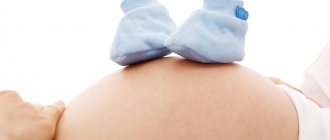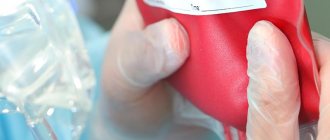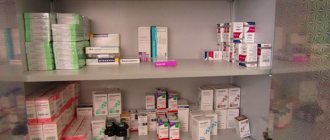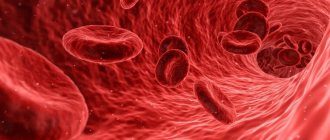December 20, 2017
May 16, 2020
- What is computed tomography?
- Types of computed tomography Cone beam CT
- MSCT
- SKT
- Emission CT (PET-CT)
The computed tomography method is actively used to diagnose pathologies of internal organs, musculoskeletal structures and soft tissues.
In terms of frequency of use, CT is the leader among tomographic examination methods.
CT scans have a number of features that patients should be aware of.
We will tell you about them in detail so that you can make an informed choice before completing the study.
CT scans are prescribed to patients with a wide range of diseases and injuries to obtain the most detailed information about:
- the general condition of the object being studied;
- localization of disease foci;
- the scale of the damage;
- involvement of neighboring structures in the pathological process;
- congenital developmental anomalies;
- the impact of a particular treatment method on the body;
- characteristics of neoplasms and their nature.
Compared to ultrasound, computed tomography is more informative, allowing you to study several types of structures at once (bones, cartilage, blood vessels, nerves, etc.). Other advantages of the technique are:
- Accuracy of results.
- Three-dimensional visualization of the affected area - you can examine the area of interest in detail.
- Possibility of conducting research on patients with pins and other metal devices.
- Speed and analysis of sensor readings.
- No obvious side effects (provided the latest generation equipment is used).
- Painless and non-invasive.
What is computed tomography?
Invented in 1972 by the joint efforts of Alan Cormack and Godfrey Hounsfield, the method, called CT, is a non-destructive layer-by-layer study of tissues and organs using X-rays. To obtain a three-dimensional model, a special apparatus is used - a tomograph with electronic and mechanical components.
➤ Interesting ! In terms of frequency of use, CT is the leader among tomographic examination methods, being used at all stages of detection, treatment and rehabilitation of pathologies of the internal structures of the human body.
The process of examining a patient involves:
- targeted x-ray exposure to a specific surface (pelvis, head, limbs or narrower areas);
- obtaining indicators from sensors located along the inner circumference of the device;
- processing information into digital format;
- taking images from a different angle;
- displaying a three-dimensional image of the object being studied.
If necessary, the doctor can enlarge one or another fragment to ensure the presence or absence of deviations from the norm. A CT scan can be prescribed by a specialist of various profiles: otolaryngologist, cardiologist, gastroenterologist, proctologist, gynecologist, neurologist, traumatologist, oncologist, urologist, etc.
Acceptance of new equipment by the clinic
When accepting goods, when the equipment is delivered directly to the end user, for various reasons it may happen that the equipment in the supplied form does not fit into the door openings and this will require partially dismantling the device. Under no circumstances should you do this yourself without some confirmation. It could be another similar problem. Service engineers will help you accept oversized goods, document the need to disassemble this or that element, without in any way violating the warranty terms. It is necessary to understand that after signing the transfer acceptance certificate, only the medical institution is responsible for the technical condition of the equipment.
Types of computed tomography
The examination is classified according to various parameters, such as the use of contrast agent, the speed of acquisition of images and the area of application. The technology of exposure to X-rays is of great importance, according to which four types of procedures are distinguished: CBCT, SCT, PET-CT and MSCT.
Cone beam CT
The most common method in dentistry and maxillofacial surgery, which allows identifying damage to bone structures and creating a three-dimensional model of the jaw. The latter is required for reconstruction of injuries, bite correction and detection of excessive enamel abrasion.
Using images, the doctor can study the desired anatomical object from different angles to make an accurate diagnosis, plan treatment, or monitor the patient’s recovery process.
MSCT
Multislice or multislice tomography involves obtaining, in one revolution of the tomograph tube, information not about one, as in conventional models, but about several sections at once. Depending on the modification of the device, the number of slices can reach 320, which is achieved thanks to the increased number of sensors.
Important! Almost all tomographs of the latest generation belong to the multilayer category.
Among the main arguments in favor of performing MSCT it is worth noting:
- the ability to detect the smallest pathological changes due to the minimum thickness of sections;
- short duration of the procedure - on average, a study without contrast takes half a minute;
- excellent image quality;
- wide scope of use, for example, virtual colonoscopy or bronchoscopy can be performed in conjunction with this study;
- saving information in various formats for easy transfer via the Internet between hospitals;
- reduction in radiation dose compared to conventional CT by 70 percent;
- use in reconstructive therapy for significant damage to bones and joints;
- availability of the option to change the radiation dose depending on the area being studied, age and gender, individual characteristics of the anatomical structure of the patient’s organs, etc.
SKT
A distinctive feature of SCT is the movement of the X-ray beam in a spiral, recording one or more images with each rotation.
The speed is set by the operator, and the radiation load does not reach high values. The method is highly accurate, having an error of no more than 2 percent, while when performing radiography this figure can reach 15%.
Emission CT (PET-CT)
A combined technology that uses several devices at once to obtain the most detailed model and visualize pathologies at the initial stage of development.
PET-CT is prescribed to most accurately determine the problem and select treatment, as well as for differential diagnosis. The study allows you to study the structure and characteristics of those organs, tissues, muscles and bones that other methods do not show.
X-ray
The oldest and most common method of visualizing the human body. X-rays are used everywhere, from surgery to dentistry. The method is simple and clear: a person is irradiated with special rays that easily pass through soft tissues and linger in hard ones. Thanks to this principle, an image is transmitted to a photographic film or sensor located on the side opposite the ray source, and radiography or fluoroscopy is available to the doctor.
Main advantages
such an examination: speed and cost. Almost all hospitals are equipped with X-ray machines; the procedure is quick and inexpensive.
Main disadvantages:
exposure and image quality. When performing radiography, the patient is irradiated, and the picture is two-dimensional. The doctor can hardly see the internal organs individually, since their shadows overlap each other. It is also impossible to see the cartilage tissue and brain in detail. The cartilage practically does not block the rays, the brain is securely closed by the skull. X-rays are not suitable for their examination.
It will be most effective to carry out radiography for damage to bones, joints and teeth.
Principle of operation
The basis of CT is the ability of tissues to absorb X-rays differently, and the image is obtained from certain sections. Detailed information can be obtained using a sensitive matrix and special sensors inside the device, as well as automatic saving and conversion of data into digital format.
Tomographs of the twenty-first century consist of electronic and mechanical components. X-rays passing through the internal structures of the body are recorded using high-sensitivity detectors. The latter are constantly being modernized, each manufacturer of medical equipment offers its own developments.
The key to the effective functioning of the device is software that allows you to:
- perform research with the required parameters;
- process and transform information;
- analyze the received data.
Preparing the premises before putting equipment into operation
The room for equipment in a medical institution must be prepared and comply with building codes and regulations: provide sufficient ventilation and air conditioning for the equipment in use, the presence of a water source and drainage system, as well as additional grounding, uninterruptible power supplies, etc. It is necessary to focus on the requirements of the manufacturer of the purchased medical equipment for the premises, the standards of sanitary and hygienic requirements necessary for operation. If it is necessary to re-equip the premises, you need to worry about coordinating the design of the converted premises with the relevant authorities. At this stage, the Balt Medical service department supervises the preparation of the room for putting the device into operation.
Attention!
All preparatory and repair work for the preparation and re-equipment of the premises must be carried out before the start of operation of the medical equipment, otherwise the equipment may lose part of the warranty period!
Computed tomography capabilities
When using CT, it is possible to scan tissue in increments of one millimeter, which guarantees a detailed three-dimensional model and indicates the reliability of the method.
The procedure gives the best results when studying bone tissues and formations that contain a significant amount of fluid. Computed tomography is used to determine:
- bleeding and traumatic injuries of various etiologies and localizations;
- malignant and benign neoplasms;
- congenital and acquired malformations of organs;
- metastases and other pathologies of the lymphatic system;
- abscesses and foci of infection;
- muscular dystrophy;
- coronary heart disease;
- respiratory system diseases;
- damage to joints and bones;
- consequences of heart attacks and strokes;
- formed blood clots;
- abnormal arrangement of organs, etc.
Main indications for the study
It is better to go for a CT scan with a direct referral from a doctor, but if no contraindications to tomography have previously been identified, you can come for the procedure on your own initiative, without a referral. Screening is required for the following conditions:
- persistent cough not associated with a previous acute respiratory viral infection;
- stable temperature 37-39 degrees;
- soreness in the sternum against the background of previously discovered cancer in other areas of the body;
- inhalation of a foreign object;
- dry cough, shortness of breath and difficulty breathing due to spastic phenomena;
- copious sputum production for a long time;
- signs of arterial pulmonary thromboembolism (pain in the heart area, sweating, pallor, rapid heartbeat);
- complications of systemic diseases affecting the respiratory system.
In the current situation with a high risk of contracting Covid, you should not do a tomography just for the sake of interest, since later, in case of a real illness, multiple repeat computer examinations may be required. In order not to expose the body to additional radiation load, at the first suspicion of coronavirus, it is better to take a test at home. If the result is positive, you must consult a doctor who will decide on computer screening.
How to prepare
In most cases, no special steps are required before performing a CT scan. The exceptions are studies of the kidneys, liver, pelvis and abdominal cavity. Preparation for them includes:
- diet correction - within a few days you need to give up food and drinks that cause flatulence;
- cleansing the intestines - the doctor may prescribe laxatives or an enema.
If the procedure involves the use of a contrast agent, a test is performed in advance to check for an allergic reaction.
Hybrid Imaging Techniques
Probably, science would not be science if it did not constantly move forward and try to create something new from the old. So, doctors began to combine different scanning methods to obtain even more detailed and high-quality images. PET and SPECT are combined with CT, MRI complements PET. Such experiments are not cheap, but can sometimes help make decisions about further treatment for the patient.
When can a doctor refer you for a CT scan?
Due to its information content, accuracy and safety, the method has become widespread. The doctor can prescribe a study:
- During a routine examination after undergoing ultrasound diagnostics, X-rays, tests, etc. The results are used to rule out errors in diagnosis.
- If you have symptoms of various diseases. Reasons for referral for scanning may include headaches, injuries without loss of consciousness, fainting, and manifestations of lung cancer.
- If there is a need to provide emergency medical care to a patient. This happens with a history of cancer, fever, development of convulsive syndrome, serious skull injuries, suspicion of dissecting aortic aneurysm, acute lesions of parenchymal organs, organic brain damage, etc.
- To monitor how patients are being treated and whether adjustments to the treatment plan are required.
Before surgery to clarify the parameters of tumors, the affected area, the location of blood vessels and obtain other information necessary for the safe performance of surgical procedures.
Mammography
A separate type of radiography designed to diagnose breast diseases, which is why women undergo mammography. There is no consensus on the recommended age for the procedure. Mammography helps ensure the absence of a malignant tumor with an accuracy of 89%. It is believed that women should be screened regularly starting at age 39, although some cancer societies recommend screening at a younger age.
Mammography is prescribed to diagnose breast cancer, the procedure is quick
, this is a plus, but the patient
is irradiated
, and the risk of an incorrect diagnosis remains, this is a minus. Mammography can be digital or film; digital mammography provides a clearer image.
Contraindications
In terms of the degree of impact on the body, CT is a gentle procedure, but there are situations when it cannot be performed. A clear contraindication is carrying a child, so women should inform their doctor about the fact of pregnancy at the first appointment. If we are talking about a study with the introduction of contrast, the list includes:
- pathologies of the thyroid gland;
- chronic kidney dysfunction;
- diabetes mellitus in severe form;
- allergic reaction to the ingredients of the contrast solution;
- various types of mental disorders that do not allow the patient to remain stationary during the examination;
- multiple myeloma and general poor health;
- significant excess weight - tomographs, depending on the modification, are adapted to study people weighing up to 130-200 kilograms.
Important! Scientists say that frequent x-ray exposure increases the risk of genetic mutation of cells, so you need to sign up for a computed tomography scan strictly as prescribed by your doctor.
Fluorography
Another type of examination that all residents of our country regularly undergo. Fluorography was “invented” almost a hundred years ago. This is a kind of accelerated radiography. Scientists proposed photographing a screen with an image obtained from radiography. This made the procedure faster and more widespread. Screening tests began to be administered to everyone in order to detect latent pulmonary tuberculosis.
Main plus
The procedure is fast,
the main disadvantage
is the image quality. The patient also receives a dose of radiation, and the doctor has a rather blurry picture, so fluorography is recommended to be supplemented with questionnaires and laboratory tests for the presence of tuberculosis.
How is it carried out?
The duration of the procedure can vary from a few seconds to half an hour, depending on the size of the area being examined, the immobility of the patient, and the use of a contrast agent. The process is completely painless, and the only thing that can cause discomfort is the clicking and knocking that appears after starting the tomograph.
First, the patient is placed on a mobile table and, if necessary, secured with straps. You must first remove clothing and metal objects (they may cause interference). Then the surface is moved inside the device and irradiation begins with simultaneous reading of sensor readings.
Once the scan is completed, the table moves out and the patient can be freed. The radiologist processes the information, providing an expert opinion with a signature and seal.
Medical staff training
Training of medical staff of institutions that will directly use the equipment in their work is one of the important stages of commissioning medical equipment, be it a tomograph, ultrasound machine or something smaller, according to GOST 12.0.004-2015 “Organization of occupational safety training.” A detailed briefing is required, the fact of which is recorded in the contract for work on commissioning the equipment. However, one should not be confused that the equipment supplier provides instructions, and the actual training is carried out by companies that have a license for this. After instructions and training have been completed by the personnel regarding the technical use of the equipment, you can sign the act of putting the device into operation. From this moment the warranty period of the new equipment begins.
What does the user get when contacting?
The undoubted benefits of cooperation with us are positively assessed by all medical institutions; each client receives:
- assembly, installation and commissioning work by experienced qualified engineers;
- quality of work ensuring reliable, uninterrupted and accurate operation of medical equipment;
- full compliance with the requirements of the regulations when installing equipment;
- full reporting and preparation of documentation and necessary regulations on the work done;
- competent instruction and training of medical personnel in handling the installed equipment;
- the possibility of concluding a contract for the maintenance of your equipment by our service engineers.









